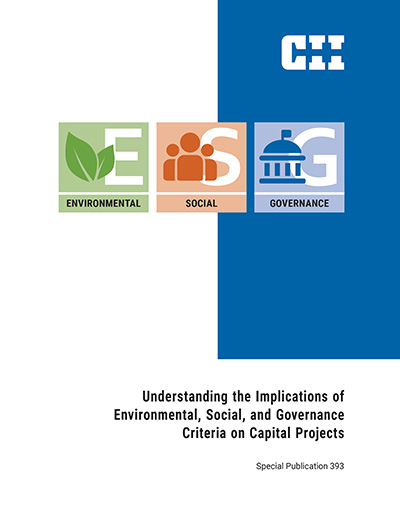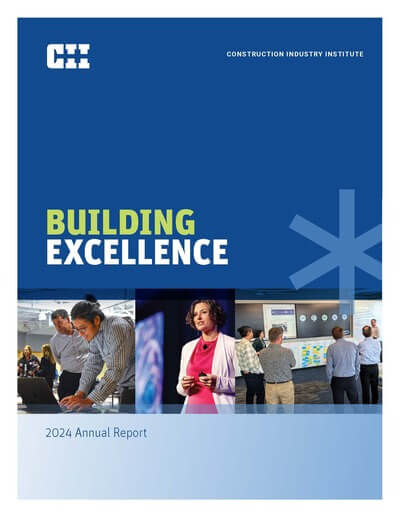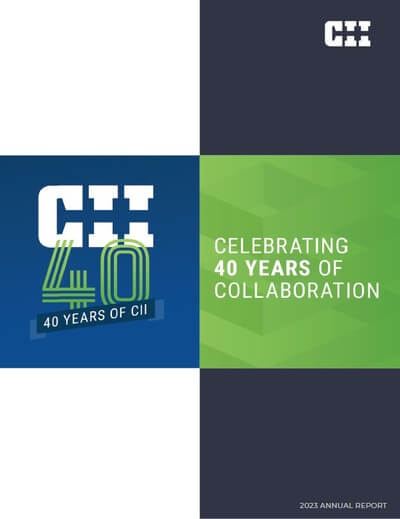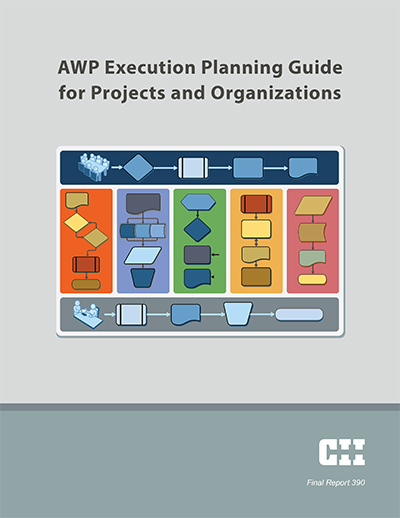
Understanding the Implications of Environmental, Social, and Governance Criteria on Capital Projects
CII engaged Houston Foresight to help explore the future of environmental, social, and governance (ESG) criteria on capital projects between the present (then 2021) and 2030. The main purpose of the project was to explore and illuminate the possible scenarios and implications of ESG criteria, so CII’s members could be better informed and equipped for the future.
What are the future implications of Environmental, Social, and Governance criteria on capital projects, and what can we do to position ourselves for success?
This analysis is roughly a 10-year projection. The span of a decade is typical of foresight projects, and it enables exploration of a new approach to what ESG might look like, while also mapping the transition pathways. The geographic focus was domestic (USA), but the team also looked globally for relevant examples and insights.
This project identified eight drivers of change (SP-393, p. 5):
- ESG Demands from Everywhere – Pressure to behave more responsibly is coming from “everywhere”: citizens, governments, NGOs, workers, and organizations themselves.
- Internal Conflicts on ESG – Within organizations, different generations and cultures are making it difficult to align around a cohesive ESG strategy.
- Tech Enabling ESG – A suite of smart technologies (e.g., AI, Big Data, IoT, Blockchain, and others) that help to facilitate ESG data gathering and reporting.
- Regulatory Ramp – A wide range of approaches for ESG has been published, considered, and implemented.
- Good on E, Less on S and G – After many years of pressure on the environmental aspect, organizations now overly focus on the E (environmental) at the expense of the S (social) and (G) governance aspects.
- Trustiness – Phenomena like fake news, conspiracy theories, and politically biased reporting are contributing to a lack of trust in information and organizations.
- ESG: Fact or Fiction – Some studies show that those who adopt ESG perform better financially, but others suggest it’s greenwashing, creating uncertainty around whether to adopt.
- Innovation Applied to ESG – Applying innovations to ESG: new building materials, renewable technologies, and new governance models.
The domain map establishes the key categories for the project to explore. The domain map provides a guide for the research, to ensure that key aspects of the domain are adequately covered.
The researchers found that the domain for ESG criteria in the capital projects industry is composed of six primary categories, which also appear in Figure 3, below (SP-393, p. 3):
- Environmental – The “E” in the ESG criteria, this category includes subtopics such as climate change strategy, resource management, waste and pollution, carbon footprint, and more.
- Social – The “S” in the ESG criteria. Includes subtopics such as safety, human rights, working conditions, employee relations, diversity, and more.
- Governance – The “G” in the ESG criteria. Includes subtopics such as leadership structure, board corruption, internal controls, compliance, and more.
- Capital Project Lifecycle encompasses the life of a capital project, including acquisition of equipment and resources, materials, logistics, emerging technology, and project management.
- Alternatives focuses on collecting and analyzing alternative measures and/or derivatives of ESG.
- Financial aspects of the ESG criteria include perspectives around investing, market factors, reporting standards, and financial instruments and tools.
In developing scenarios for the future of ESG, the researchers developed four future scenarios for this project (SP-393, p. 7):
- Wait and See – In this world, the industry sticks with its wait-and-see approach to regulations and implementing ESG.
- B & G Corps – In this world, the Social and Governance aspects of ESG finally begin to catch up with the Environmental ones. The focus on Environmental does not reduce so much as the spotlight on the others brightens considerably. B Corps are “businesses that meet the highest standards of verified social and environmental performance, public transparency, and legal accountability to balance profit and purpose” (B Lab). G Corp is suggested as a B Corp equivalent needed for Governance, which adds strengthened corporate governance expectations and removing requirements for charitable giving out of profits.
- Regulatory Cornucopia – In this world, after several years of debate and discussion, regulation begins to be passed . . . and passed . . . and passed! There seems to be ESG-like regulation everywhere: at the global, national, and even industry-specific levels.
- Purpose Matters – In this world, a loose but significant coalition of professionals with a similar socio-economic profile coalesces around shared values that align solidly with ESG. These individuals leave the traditional big companies that adopted a wait-and-see strategy.
In three workshops, the research team generated implications (specific to E, S, and G) and spent time fleshing out the most important implications as the Elevator Speech Responses, which are part of Special Publication 393 (SP-393, p. 11).
A good foresight project provides a sense of direction for moving into the future. It should be emphasized that organizations do not get to choose their scenarios, but rather choose how they will respond to the various scenario possibilities. The logic of scenario planning is to be ready for whichever way the most plausible combinations play out.
The researchers analyzed the issues they had identified and discovered that four cross-cutting issues (robust pillars) – the “Big Four” – were important to address in all four scenarios (SP-393, p. 9):
- Develop a strategy for addressing each part of ESG.
- Decide: Do we partner or do it alone?
- Prepare for more (and extra difficult) innovation.
- Take extra care of your public perception and younger generation of employees.
As Figure 6 shows, the path begins at the left side, in the present, where we are already close to a Baseline/Collapse future. The researchers believe that business as usual would lead to the “Wait and See” scenario; however, they would caution companies from forming a long-term plan along “Wait and See,” because the future appears to be strongly headed toward some sort of ESG compliance.
Alternatively, the capital projects industry could choose to focus on the “Big Four” issues, develop a winning strategy for each, and become resilient and/or flourish in any scenario where it finds itself. For each of the other three scenarios, the research team included a major strategic choice. As a company in the capital projects industry develops its plan to address each robust issue, it should be guided by that issue’s major strategic choice.



